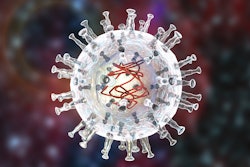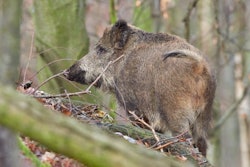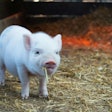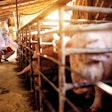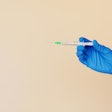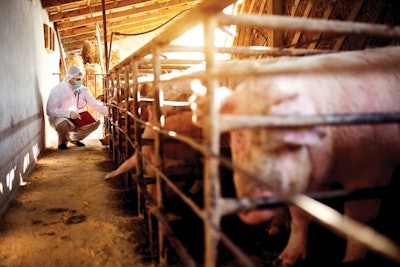
Following an absence of more than one and a half years, cases of porcine reproductive and respiratory syndrome (PPRS) have been detected at a farm in eastern Estonia.
At the premises, 27 of the 609 pigs tested positive for the virus, according to the official notification to the World Organisation for Animal Health (WOAH).
None of the animals showed clinical signs of PRRS, but the infection was picked up through routine disease surveillance. Source of the virus is reported to be the introduction of new animals to the herd via legal pig movements.
In the WOAH report, it was stated that all pigs at the farm will be slaughtered, and the site will be thoroughly cleaned and disinfected.
PRRS: Swine industry’s most costly disease
A widespread viral disease affecting domestic pigs, PRRS costs the U.S. swine industry alone US$560 million annually as a result of reproductive failure in sows, and pneumonia in piglets.
WOAH describes PRRS as “the most important disease in intensively reared pigs in North America and Europe.” PRRS was first recognized in the U.S. in 1987, and it is now also a growing threat in Asia.
With several strains of the virus, clinical symptoms include fertility issues, pneumonia and greater susceptibility to secondary infections. Sudden death in pigs is associated with particularly virulent strains.
A member of the Arterivirus family, the PRRS virus was first identified in 1991. It poses no threat to human health.
According to WOAH, prevention of the introduction of the virus is key to the control of the disease. For farms in areas where the PRRS is present, all replacement breeding stock should have known health status, and be kept in isolation on arrival for 45-60 days.
Commercial vaccines are available and effective. In case of an outbreak, WOAH recommends depopulation of the premises, safe disposal of the carcasses and other materials, and thorough cleaning and disinfection.
Based on WOAH notifications, Estonia is the only country to have ongoing PRRS. Since 2020, Nepal and Switzerland have each recorded two outbreaks in disease waves that have long since been declared “resolved.”
France reports further outbreaks of Aujeszky’s disease
In September 2023, the French veterinary authority confirmed to WOAH the country’s first outbreak of Aujeszky’s disease since May 2022.
With the latest update dated March 13, the number of outbreaks has risen to seven. With the total animals directly impacted just over 400, the herds infected have been generally small farms and backyards. All are reported to be free-range production systems, and one involved wild boar kept in captivity.
However, the cases have been widely dispersed in five regions — mainly in the southern half of mainland France. One of the recent outbreaks is in the northern region of Hauts-de-France.
According to the official notification, source of the infection is unknown.
Aujeszky’s: Swine are reservoir hosts
Also known as pseudorabies, Aujeszky’s disease is caused by a herpes virus, according to WOAH.
While it infects several mammals — although not humans — the pig family is its primary host, and the species with which it is generally associated.
The virus affects the central nervous system and other organs, particularly the respiratory tract, resulting in a wide range of symptoms. Young piglets are very susceptible to infection, and usually die, while older animals show respiratory symptoms, hypothermia and anorexia. In pregnant sows, infections lead to abortions or increased stillborn piglets.
Pigs that survive Aujeszky’s infection serve as a reservoir host for the virus.
Vaccines greatly reduce the excretion of the virus from infected pigs, according to WOAH, and some allow the differentiation of vaccinal antibodies from those arising from natural infections.
Since 2020, notifications to WOAH indicate that Aujeszky’s disease has occurred in France multiple times. Furthermore, in 2021, a single hunted wild boar tested positive for the virus in Finland.


